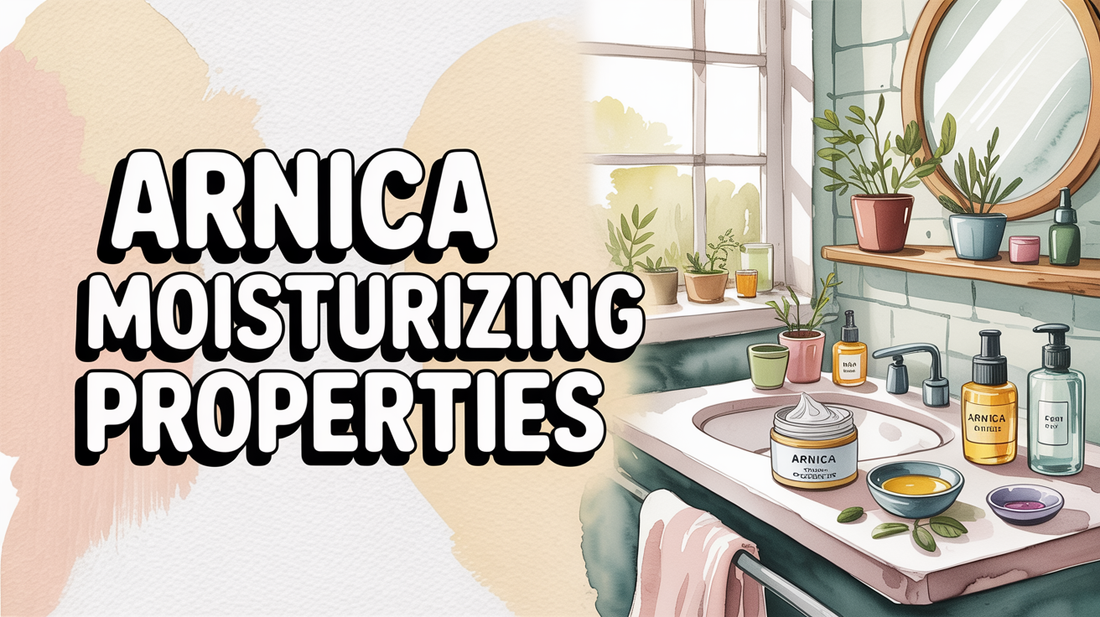Can you use arnica cream as a face moisturiser?
Many people are curious about the potential of using arnica moisturiser in their daily skincare routines. While traditionally known for its soothing properties, arnica can also be considered when looking for hydrating remedies. In this post, we will explore how arnica cream can fit into your skincare regimen, organized into three detailed sections to help you take action tonight.
Arnica as a Moisturiser
Arnica, derived from the Arnica montana flower, has a rich history of being used for its soothing and gentle properties. Although it’s primarily known for addressing bruises and muscle soreness, arnica cream can serve as a facial moisturizer thanks to its emollient base ingredients. The effectiveness of an arnica moisturiser largely depends on the product formulation and individual skin tolerance.
Many arnica creams are crafted with hydrating base ingredients such as glycerin and plant oils, which enhance their moisturizing capabilities. This herb has been embraced in traditional skincare for centuries, often promoting a gentle healing effect on the skin. However, concentrations of arnica can vary, so it’s essential to choose products wisely for optimal results.
- Arnica montana contains compounds that may support skin soothing.
- Quality arnica creams typically include moisturizing agents like oils and emulsifiers.
- Used for ages, arnica has a reputation for addressing various skin concerns.
- Product formulations can differ; some may have minimal active ingredient content.
- Unlike standard moisturizers, arnica creams are often designed for therapeutic effects.
Try It Tonight: Eye & Skin Refresh ✨
- Remove makeup and cleanse gently with lukewarm water.
- Apply a cool compress or take a few deep breaths to relax facial tension.
- Lightly dab a pea-sized amount of Jane Vine Arnica Gel under eyes or on areas of concern. Always patch-test first if you’re new to arnica-based skincare.
Hydration Benefits
The hydration benefits of arnica cream for facial use primarily stem from its base formulation rather than the arnica extract itself. While arnica may offer some soothing qualities, the real moisturizing effects arise from accompanying ingredients such as emollients and humectants. Additionally, the anti-inflammatory properties of arnica can be beneficial for sensitive or irritated skin as part of a hydrating routine.
Moisturizing effects often come from carrier ingredients like plant-based oils and mineral oils in the cream base. The texture of the cream can also create a protective barrier on the skin, which helps prevent moisture loss. Some formulations even enhance hydration with ingredients like hyaluronic acid, making them suitable for dry or mature skin types.
- Hydration benefits mainly come from the cream's base rather than the arnica itself.
- Arnica's soothing properties may assist in reducing skin irritation.
- The cream can form a barrier, helping to maintain skin moisture levels.
- Look for products with additional hydrating ingredients for a more effective routine.
- These benefits may be particularly favorable for those with dry skin types.
Why We Recommend a Gentle Helper 🌿
Jane Vine Arnica Gel is formulated for quick absorption and a soothing, lightweight feel. It may support a calm routine and help reduce the appearance of puffiness, dark circles, and skin stress over time.
- Fast-absorbing comfort—no greasy residue.
- Gentle, cooling sensation designed for delicate skin.
- Clean, naturally inspired formula with a fresh finish.
Best Practices 🔍
When considering arnica cream as a facial moisturizer, proper application and safety precautions are essential. Since arnica products aren't specifically formulated for daily facial use, it’s crucial to patch test and monitor skin reactions. Following best practices can help maximize benefits while minimizing potential adverse effects.
Always perform a patch test on a small area before applying arnica cream to the entire face. Choose high-quality, reputable products that clearly list all ingredients. Apply a thin layer and be cautious around the delicate eye area, as some individuals may experience sensitivity. Start with less frequent application to gauge tolerance before transitioning to daily use.
- Patch test first to ensure skin compatibility.
- Select reputable arnica products with transparent ingredient lists.
- Apply sparingly, avoiding sensitive areas like the eyes.
- Begin with every other day application to assess skin response.
- Cease use immediately if any irritation occurs and consult a dermatologist if needed.

